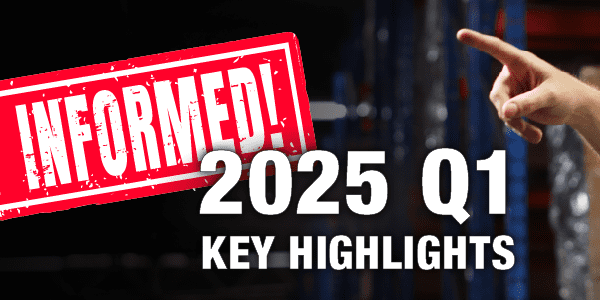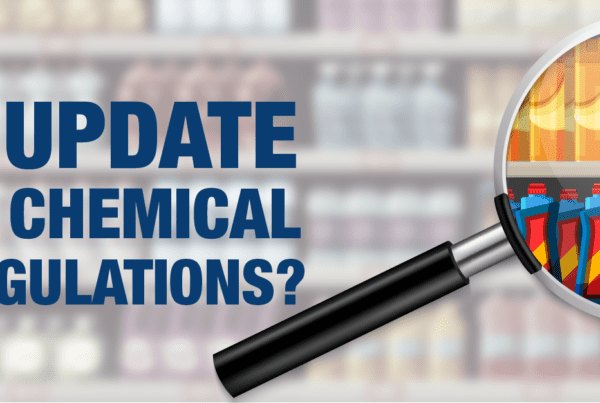
If you’re a manufacturer of products for workplace use in Canada, you’re probably with familiar with the “Hazardous Products Regulations” (HPR) that make up the heart of WHMIS2015 (Workplace Hazardous Materials Information System 2015). You’re probably even more familiar with that first headache in the system – “Is my product actually hazardous? If it is, what hazards does it have? How do I figure this out?” This can be especially difficult because the new WHMIS classification system is based on the Globally Harmonized System of Classification and Labelling of Chemicals (GHS), which has dozens of potential hazards, most of them further divided into categories reflecting the degree of danger.
To make it worse, the HPR doesn’t tell you how individual chemicals should be classified. Instead, it gives the criteria for deciding each class and category, then sends you out to obtain data. You can spend big bucks testing your product (which will be highly accurate but expensive), or you can spend hours combing through published literature to find out if there’s information from previous research. Then, the raw data has to be analyzed according to rules which can range from the relatively simple (for physical hazards like flammable liquids) to mind-bogglingly complex, such as the rules on health hazards which seem to assume all classifiers are expert toxicologists. While the official UN GHS publication, sometimes called the Purple Book, gives considerable guidance, the whole system can be bewildering.
There has to be a better way, right? Well, many countries and agencies have created lists of pre-classified chemicals. Some, like the European Union’s Annex VI are mandatory for use in those regions; others are provided as guidance only. The problem, of course, with creating mandatory lists is that classifications are only as good as the data they are based on. If you obtain new data, you may discover your classification is incorrect. This has kept the UN Subcommittee on the GHS from creating a list that would apply world-wide. Suppliers are free to use the classification that best fits their own data, but it does create a lot of extra work for them.
Health Canada has finally decided to give Canadian suppliers a bit of assistance. They’ve started to compile what they call “Hazardous Substances Assessments” (HSAs) that collect and review current information that’s available to the public, and assign GHS classifications following the HPR criteria. The first five of these are now available on Health Canada’s website.
The HSAs will, because of how they’re created, be different from other lists. First, the datasets used as sources may not be exactly the same. Furthermore, the HPR has not always followed the GHS Purple Book classification procedures exactly, so the assessments will use the Canadian rules. These may not match the classifications done under EU, American, or other regulations. And, of course, because they’re based on unique datasets collected by Health Canada, they may not match those established by suppliers either.
Fortunately, these are not mandatory classifications. Health Canada says they are intended to serve as “educational and information resources” – in other words, as guidance. Health Canada goes on to remind users of the assessments that “[w]hile the classification information included in the Hazardous Substance Assessments can serve as a guide for classifying a product, suppliers must classify their products in accordance with the HPR, based on established scientific principles, and supported by studies and scientific data at their disposal.” This means that not only are you allowed to establish a different classification if you have data that conflict with these classifications, you mustdo so. However, the datasets are researched as fully as Health Canada resources allow.
As the start of the program, Health Canada has only released five HSAs, based on high-volume, well-known chemicals. First, there’s the common solvent Acetone, which is given the following classification:
This has been assigned two hazard classifications in the HSA. It has a health hazard of eye irritation, Category 2A (which means it’s a severe irritant but not likely to cause permanent eye damage), and is also assigned a physical hazard of Flammable Liquids, Category 2 (Severe fire hazard).
The rest of the report for Acetone summarizes the dataset Health Canada was able to collect, and reasons why they concluded other hazards sometimes assigned by suppliers to Acetone (such as respiratory irritant) were not applicable. That doesn’t, of course, mean that if a supplier had additional data that indicated that those hazards did apply, they should ignore them. Nor, on the other hand, would a new test that showed a hazard did not apply, be inadmissible. As Health Canada stated, these classifications are for guidance only.
An example of this can be found in the classification for another common chemical, Sodium hydroxide(commonly called lye or caustic soda). This has been, as expected, classified as a corrosive to skin and capable of causing serious eye damage. However, under Physical Hazards, the HSA states “Sodium hydroxide does not meet the criteria for classification.” This is surprising, because it has been assumed by many classifiers that such a strong alkali would meet the criteria for corrosivity to metal. It seems Health Canada pondered this, as they explain:
“Data suggest that Sodium hydroxide is corrosive to several metals (aluminum, zinc and zinc-containing brasses and bronzes, types 1010, 1020, 1075 and 1095 carbon steel, copper, and silicon copper); however, the data are insufficient to classify as Category 1.
Indeed, Schweitzer’s “Corrosion resistance tables” classified the corrosivity of Sodium hydroxide using a threshold of 50 Mils/year (1 Mils is a thousandth of an inch), equivalent of 1.27 mm/year, which is under the 6.25 mm/year threshold for classification.”
Since the Schweitzer reference isn’t available on-line, I wasn’t able to confirm which metal they were referring to for these measurements. Steel is more resistant to corrosion than aluminum, although both metals are considered for classification. Seeing that aluminum has often been seen reacting badly with sodium hydroxide (for example, this unfortunate aluminum soft drink can https://www.youtube.com/watch?v=MwcRbcvIQOI), a supplier could use their own information to reclassify sodium hydroxide as corrosive to aluminum.
Beyond Acetone and Sodium hydroxide, the HSAs address Adipic acid (used in making nylon and other polymers); n-Butyl acetate (a common chemical sometimes used as a flavouring agent); and Diethylene glycol monomethyl ether (DEGME), an additive to jet fuel and other preparations such as paints and cleaning agents.
The HSAs should provide excellent guidance for classifiers in Canada. The classifications assigned appear to be well-researched and take a conservative approach. Hazards are not assigned unless there is clear data that meet the criteria in the HPR. Yet Health Canada has clarified specifically that these are intended as guidelines, not mandatory classifications. They can be changed by suppliers who have supportable data that wasn’t in the Health Canada dataset, so suppliers aren’t “locked in” to a classification they don’t agree with.
I hope Health Canada continues this work and soon provides us with HSAs for additional products. I also hope that they have plans for occasional review of existing HSAs, so that earlier ones don’t become outdated and potentially misleading. At any rate, this appears to be a good first step in providing Canadian chemical suppliers some needed guidance and short-cuts to make the job of classification easier.
Do you have to classify products for WHMIS or other GHS-based systems? The specialists here at ICC can help, from reviewing SDSs to providing full classifications based on available data. Contact us at 1-888-442-9628 (U.S.) or 1-888-977-4834 (Canada), and ask for one of our Regulatory Specialists. We’ll help you find the best classification for your products.






 ICC USA
ICC USA ICC Canada
ICC Canada